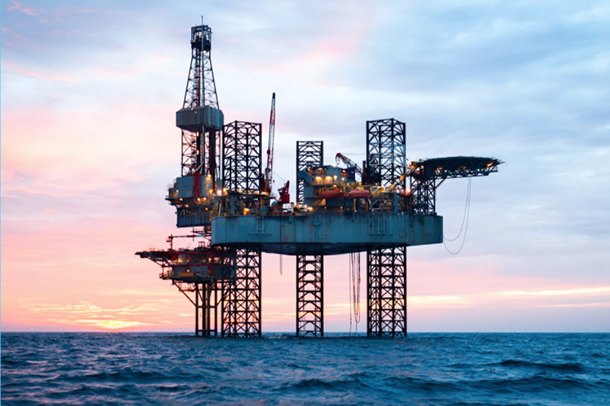Oil 2021 Outlook – Oversupply and Lower Demand
Oil 2021, an analysis by the International Energy Agency (IEA), explains why the pandemic caused the collapse in demand for oil in 2020, and why it may never return to ‘normal’.
Our behaviors as individuals and nations have changed due to COVID-19, and the restrictions placed on us during this time. There has also been a movement within governments around the world to accelerate the lowering of carbon emissions, causing a huge drop in oil demand over the next six years. This in turn has caused turmoil among oil-producing countries and companies, who need to make decisions regarding any new exploration and tapping existing resources that may only add to the surplus they have already.
There is an inventory surplus built up over the past year that is being worked off, and global oil stocks, minus any strategic reserves, will gradually return to pre-pandemic levels in 2021. Meanwhile, governments are looking at the recovery as a catalyst to lower our carbon footprint, especially if said governments do follow through with stricter policies that hasten our implementation of so-called clean energy.
With this in mind, oil producing-countries and companies are in a quandary. Leave resources sitting in the ground, or create new capacity that may sit idle for however long? Let’s say you and me, and motorists around the world, don’t buy into this, and all these experts fail to see the demand for oil and gasoline on the rise once again. This would leave the producers in a shortfall, and we would have another oil crisis, with geopolitical ramifications, and supply shortages to follow.
Globally, oil demand is forecast to be a record 9.3 million barrels per day (mb/d) lower in 2020 than it was in 2019, as COVID-19 brought mobility to a screeching halt in 187 countries. The second half of 2020 should show a gradual recovery, as vaccinations increase and our activity levels rise, but demand is still not expected to reach pre-pandemic levels before years end.
What we can’t account for is the speed of the recovery, and how uneven it will be geographically, between sectors, and for various products. Gasoline demand is unlikely to return to 2019 levels, as fuel efficiency and the movement towards more electric vehicles continues to offset any growth in consumption. Even as we see tens of thousands of Americans returning to the skies, aviation fuels are slowly expected to return to 2019 levels by 2024, and continuation and growth of online meetings could affect business travel indefinitely.
Investment in the oil industry and expansion plans have been curtailed, as companies spent 1/3 less at the start of 2020, and 30-percent less than they had in 2019. In 2021, only a marginal rise in investment is expected. Supply growth worldwide is being constrained, with spending cuts and project delays. World oil production capacity has been reset to 5 mb/d by 2026, and unless there’s action by developed countries, we’ll be 5.2 mb/d short by 2026 to meet the demand rebound.
Half of the increase is expected to come from the Middle East, primarily from existing capacity. Sanctions against Iran may require Saudi Arabia, Iraq, the UAE, and Kuwait, to produce oil at or near their record highs. This is a change from when the U.S. dominated world supply growth, and our investment and activity level will only increase when prices rise. The outlook for the oil industry is for spending discipline, better cash flow, deleveraging or reducing debt, and increasing returns for their investors.
According to the IEA, passenger car oil usage will peak in the late 202os, and during the 2030s, increase an average of only 0.1 mb/d a year, with no peak overall due to continued use by the petrochemical, trucking, shipping, and aviation industries. However, a shift in policies will lead to a peak in global oil demand in the next few years, as it drops more than 50 percent in developed nations between 2018-2040, and 10 percent in developing countries.
[Images: International Energy Agency]
With a father who owned a dealership, I literally grew up in the business. After college, I worked for GM, Nissan and Mazda, writing articles for automotive enthusiast magazines as a side gig. I discovered you could make a living selling ad space at Four Wheeler magazine, before I moved on to selling TV for the National Hot Rod Association. After that, I started Roadhouse, a marketing, advertising and PR firm dedicated to the automotive, outdoor/apparel, and entertainment industries. Through the years, I continued writing, shooting, and editing. It keep things interesting.
More by Jason R. Sakurai
Latest Car Reviews
Read moreLatest Product Reviews
Read moreRecent Comments
- Golden2husky 2014 Vette, just front tires so far. Acura TL is a recent acquisition so no expenses yet though the passenger window reverses all the time for no reason. 2002 Buick was mostly trouble free until its 21st birthday. Last year brought five repairs, three of which were window regulator issues. I just had a tie rod separation due to an inproper wheel alignment that had too few threads in the outer tie rod end. Good thing that happened at low speed. No fun when you can't steer....
- JK Savoy Blue is a thing, but Sestriere White? Sestriere is a ski town near Turin, so I guess it meant to conjure up thoughts of snow. Pretty car. I hope Pininfarina has success. The industry in and around Turin has taken a big hit and is a shadow of its former self.
- Ravenuer My 2023 CRV EX, 6 mo old, 4800 miles: $0.
- TheEndlessEnigma My '16 FiST: Oil changes, tires, valve cover gasket (at 112k miles), coolant flush, brakes.....and that's itMy '19 Grand Caravan: Oil changes, coolant flush
- John Clyne I own a 1997 GMC Suburban that I bought second hand. It was never smoked in but had lost the new car smell when I got it four years after it was sold new. I own a 2005 Chevrolet Avalanche & that still has the new car smell. I like the smell. I could never afford a new car until the Avalanche. It might be my last new car? Why do they build cars with fire retardant materials in them. Smoking rates are falling & if someone continues to smoke in this day & age is a fool especially with all the information out there.




































Comments
Join the conversation
In the meantime gas will go up and the automakers will introduce more vehicles with turbo 3s and 4s with CVTs. Full size trucks will go to more turbo V6s and in the case of the Chevy Silverado a turbo 4 will be the base engine. This will be enough to make me an EV convert. I wonder how many others will feel the same way.
The infrastructure for EVs will get built and within a decade we will likely have noticeable infrastructure for EVs within major metropolitan areas. Infrastructure for EVs will take longer for less populated areas. It will cost a lot of money for new infrastructure but then the US spent a lot to develop the interstate system over decades. Nothing is free. As for charging additional tax for EVs that is already happening in states like Ohio to cover the cost of roads.